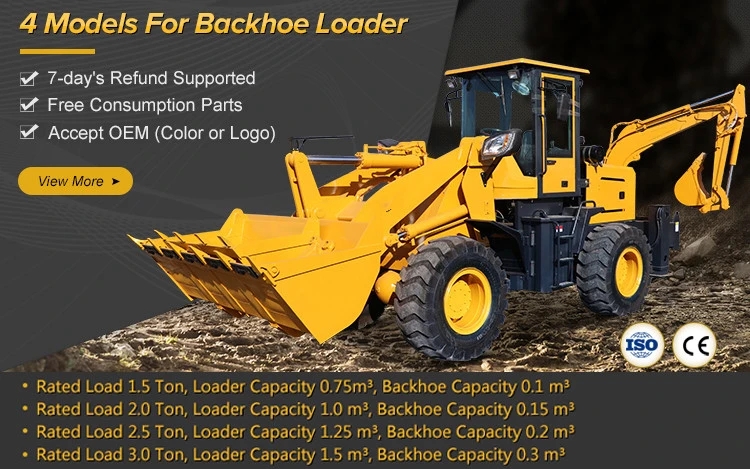In various construction projects, loaders are regarded as an essential and crucial mechanical equipment. With their powerful operating capabilities and wide applicability, they provide solid support for the efficient operation of many fields such as construction, mining, ports, and agriculture.

I. Definition and Working Principle of Loaders
Loaders are earthwork construction machinery widely used in construction projects such as highways, railways, construction, hydropower, ports, and mines. Their main working device is the bucket at the front, which is driven by a hydraulic system and can complete a series of operations such as material loading, handling, and unloading. During operation, the loader first inserts the bucket into the material pile, and then uses the traction and lifting force of the machine to shovel the materials into the bucket. Subsequently, by operating the hydraulic system, the bucket filled with materials is lifted and transported to the designated location, and finally, the bucket is tilted to unload the materials.
II. Key Components of Loaders
Engine: As the power source of the loader, the performance of the engine directly affects the working efficiency and power output of the loader. Modern loaders are mostly equipped with high-performance diesel engines, which have the characteristics of high power, high torque, and strong reliability, and can meet the operation requirements under various complex working conditions.
Transmission System: It includes components such as the hydraulic torque converter, gearbox, drive shaft, and drive axle. The hydraulic torque converter can achieve a flexible connection between the engine and the transmission system, effectively buffer impact loads, and improve transmission efficiency; the gearbox provides different gears, enabling the loader to flexibly adjust speed and traction force in different operation scenarios.
Hydraulic System: It is the core system for the loader to achieve operations such as loading, lifting, and unloading. It consists of components such as a hydraulic pump, multi-way directional valve, and hydraulic cylinder. Through the pressure transmission of hydraulic oil, it precisely controls the movements of the bucket and boom, ensuring the smoothness and accuracy of operation.
Frame and Tires: The frame of the loader is welded with high-strength steel, which has sufficient strength and rigidity to withstand various stresses during operation. Tires are selected with different specifications and tread patterns according to different operating environments and working conditions to provide good grip and passability.
III. Performance Characteristics of Loaders
Powerful Loading Capacity: The bucket capacity of loaders ranges from a small 0.5 cubic meters to over 10 cubic meters for large ones, which can meet the material loading requirements of projects of different scales. Large loaders can load several tons or even dozens of tons of materials at a time, greatly improving the operation efficiency.
High Operation Speed: Loaders have a relatively fast driving speed and operation cycle speed. In short-distance material handling operations, they can quickly shuttle back and forth between the material stacking area and the unloading point, reducing operation time and improving work efficiency.
Good Maneuverability: The steering system of loaders is flexible, with a small turning radius, allowing them to freely shuttle in narrow construction sites and complex operating environments, adapting to the operation requirements of different sites.
Simple and Comfortable Operation: The cab of modern loaders is designed more humanely, equipped with comfortable seats, advanced control systems, and good visibility. Operators can easily control the various actions of the loader through various levers and buttons, reducing labor intensity and improving the comfort and accuracy of operation.
IV. Application Scenarios of Loaders
Construction Projects: On construction sites, loaders are mainly used for handling and loading and unloading various building materials such as sand, gravel, cement, and bricks. It can quickly unload materials from transport vehicles and transfer them to the designated location at the construction site, providing efficient material supply support for construction.
Mining Operations: In mining operations, loaders are responsible for the loading and transportation of ore. Their powerful loading capacity and performance to adapt to harsh environments enable them to operate stably on rugged roads and in complex working conditions in mines, playing an important role in the efficient mining of mines.
Ports and Terminals: Ports are important hubs for cargo loading, unloading, and transshipment. Loaders are used here to load and unload various bulk cargoes and containers. It can quickly unload cargo from ships at the dock front or load cargo onto ships, improving the cargo handling capacity of the port.
Agricultural Field: In agricultural production, loaders can be used for handling and loading and unloading agricultural products, feed, fertilizers, etc. At the same time, it can also cooperate with other agricultural machinery for farmland finishing, site cleaning, and other operations, providing strong support for the modernization of agricultural production.
V. Future Development Trends of Loaders
With the continuous progress of science and technology, loaders are also developing in the directions of intelligence, greenness, and high efficiency. In the future, loaders will be equipped with more advanced sensors and intelligent control systems to achieve functions such as automatic operation, fault diagnosis, and remote monitoring, improving operation safety and efficiency. At the same time, in order to meet environmental protection requirements, electric loaders and hybrid loaders will gradually become the mainstream in the market, reducing environmental pollution. In addition, the performance and reliability of loaders will also be continuously improved to meet the increasingly complex and diverse needs of construction projects.
In conclusion, as an important mechanical equipment in the construction field, loaders, with their powerful performance and wide application scenarios, have made important contributions to promoting the development of various industries. In the future, with the continuous innovation and progress of technology, loaders will surely play a greater role in more fields and bring new development opportunities to the construction industry.





